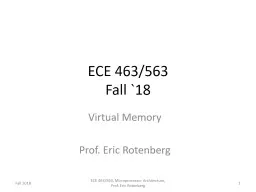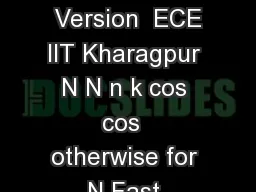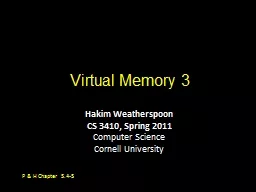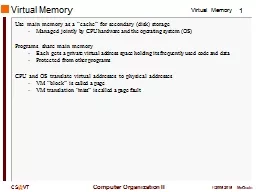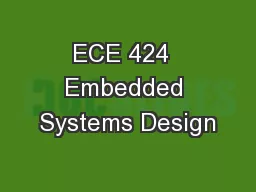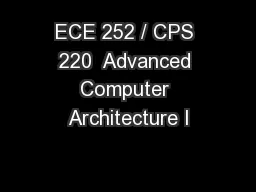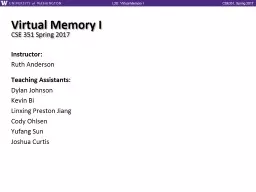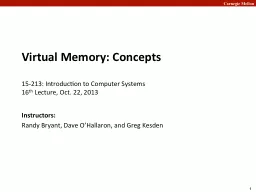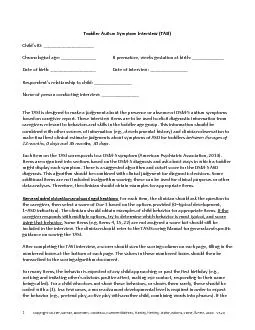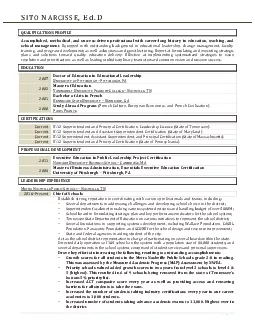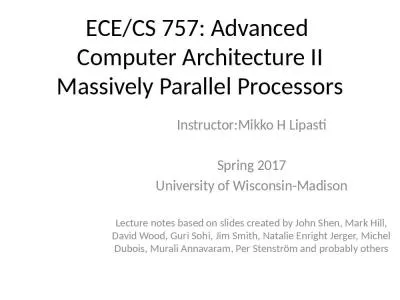PPT-ECE 463/563 Fall `18 Virtual Memory
Author : festivehippo | Published Date : 2020-06-23
Prof Eric Rotenberg 1 Fall 2018 ECE 463563 Microprocessor Architecture Prof Eric Rotenberg Virtual Memory Every program has its own virtual memory Large virtual
Presentation Embed Code
Download Presentation
Download Presentation The PPT/PDF document "ECE 463/563 Fall `18 Virtual Memory" is the property of its rightful owner. Permission is granted to download and print the materials on this website for personal, non-commercial use only, and to display it on your personal computer provided you do not modify the materials and that you retain all copyright notices contained in the materials. By downloading content from our website, you accept the terms of this agreement.
ECE 463/563 Fall `18 Virtual Memory: Transcript
Download Rules Of Document
"ECE 463/563 Fall `18 Virtual Memory"The content belongs to its owner. You may download and print it for personal use, without modification, and keep all copyright notices. By downloading, you agree to these terms.
Related Documents

